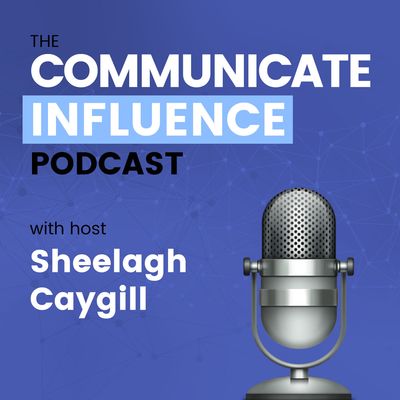We explore the essential aspects of communications, marketing, and writing. Podcast interviews with thought-leaders look at important influences that shape a PR pro’s or marketer’s work and creativity for the better. Show host Sheelagh Caygill uses her experience as a journalist to ask guests probing questions, often revealing little-known tips and insights. Episodes always offer listeners solutions to common problems and actionable tips. Sometimes the topics we explore will have a less direct impact on our immediate goals, but they still matter. Episodes have delved into communicating with influence, enhancing leadership communications, and the connection between emotive content writing and poetry. Our guests, just like our listeners, are global. As much as possible, we go beyond international borders and engage in issues affecting PRs and marketers around the world. We feature trend updates, such as the growing force of artificial intelligence in communications and marketing, working on climate reality campaigns, and dedicated leadership support for reputation management and a powerful brand presence...
https://communicateinfluence.com
Internal Comms With Narrative Creates Successful Engagement
The role of an internal communications team varies greatly from business to business.
But Ben Baker, an employee engagement specialist based near Vancouver, believes that every internal communications team hashares one important task - disseminating an organization's narrative, and making sure that employees understand it.
Says Ben: “This is everyone’s job. Is not a job title. It really needs to start with how the culture of the organization evolves.”
Role of internal comms
“For me, internal communication is getting everybody to understand who you are as a company, what you do, why you do it, where you came from, who do you serve, what are the things that make you different from your competitors, and where are you going as a company.
“In most organizations there is a huge disconnect between what the CEO wants to achieve and what the organization understands,” he states.
“You need to ask a lot of questions to get this in place - Who are you? Who are your customers? What do you understand?” says Ben. “Every department tells a different story, and that’s the first place we see where everyone has a different story about where you’re at and where you are going.”
Need for a visionary CEO
Ben says that his goal when he works with an organization is to ensure that there is a visionary CEO. If you have a visionary CEO who realizes where they want to take the company and what they want to achieve, it’s much easier getting their message out there. Included in the messaging should be where they see pitfalls, challenges, along with the next generation of customers.
Working with the c-suite, internal communications needs to use its skills to make the message human, giving it a personal factor. They then plan effective distribution of the story. And internal comms should ensure that it’s part of the onboarding for every new employee.
Onboarding needs to improve
Says Ben: “The most underdeveloped part of any organization is onboarding. Onboarding can be as horrible as filling out a few forms and getting new business cards and then it’s ‘We’ll see you later’.
“You are doing your employees nothing but a disservice. Here’s a scary number. Every employee that you lose costs you $100,000 to replace,” notes Ben.
“We collectively spend millions of dollars in recruitment and hiring, but nothing in terms of onboarding employees, training, or bringing them into the culture and training, making sure that they have mentors, or having great managers,” he says. “This is where internal comms needs to be. In fact, I’m a big believer in getting rid of the word manager and calling them frontline leaders.”
Employee engagement
Ben explains that frontline leaders need to be the keepers of the brand story in their department. When everyone understands the story, they can ask why when an organization does things that aren’t related to the brand story. Is it just shiny object syndrome? If a new initiative isn/t aligned with a company’s narrative, people should be able to raise questions and get the focus back onto the organization’s purpose.
“If it is truly happening, then that’s when the story becomes propagated and everybody remembers and retells the story.”
Find Ben Baker at Your Brand Marketing or Linkedin.
